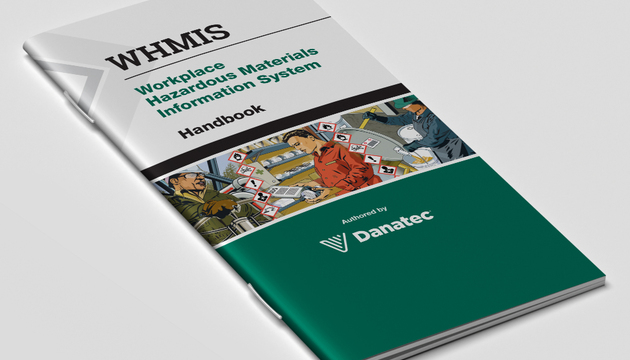
WHMIS (GHS) Handbook
Description
Compact and pocket-sized, it's built to go wherever you go—whether that's a training session, the shop floor, or tucked in your toolbox. It works great as a hands-on workbook during training and as a quick reference guide when you're on the job and need to double-check something fast.
Need to outfit your whole team? Volume discounts are available, so you can get everyone on the same page with consistent, reliable safety information across all your worksites.
Why You Need a WHMIS Handbook for Compliance
It's perfect for toolbox talks, refreshing your memory before working with a specific chemical, or when someone on your crew has a quick safety question. And because it's a physical book, you don't need Wi-Fi or a charged device to access it—especially handy in warehouses, labs, or anywhere else hazardous materials are handled.
Key Topics Covered in the WHMIS Handbook
Introduction to WHMIS
Sources of information like SDSs, labels, pictograms, and training
Hazard types, health effects, and routes of exposure
Hazard controls, PPE, exposure limits
Emergency procedures and first aid
Rights and responsibilities of employers, workers, suppliers; legal protections and penalties
Your role, further training, and more information
Glossary of key terms
Sample Label and Sample SDS
FAQs of WHMIS Handbook:
Q1: What is the WHMIS Handbook?
The WHMIS Handbook is a comprehensive guide that explains Canada’s Workplace Hazardous Materials Information System (WHMIS). It covers hazard classification, pictograms, labels, Safety Data Sheets (SDS), and worker responsibilities in handling hazardous products.
Q2: Who needs to use the WHMIS Handbook?
Employers, workers, supervisors, contractors, and health & safety professionals should use the WHMIS Handbook to understand their roles and responsibilities under WHMIS legislation.
Q3: Is the WHMIS Handbook mandatory in the workplace?
While the handbook itself is not legally mandatory, employers are required to provide WHMIS training and make key information (like labels and SDS) accessible. The WHMIS Handbook serves as a practical reference to support compliance.
Q4: Does the WHMIS Handbook include the latest WHMIS 2025 updates?
Yes. The WHMIS Handbook should include recent updates under the Hazardous Products Regulations (HPR), such as changes to hazard classification, labelling, and SDS requirements.
Q5: How does the WHMIS Handbook support training?
The WHMIS Handbook can be used alongside online or in-person WHMIS training. It helps learners reinforce concepts like hazard classes, safe handling procedures, and worker rights after completing certification.
Q6: Can employers distribute the WHMIS Handbook to workers?
Yes. Employers often provide printed copies of the WHMIS Handbook as a reference guide for workers. This ensures employees have ongoing access to safety information.
The WHMIS Handbook is a written reference guide, while WHMIS training is an interactive course that provides certification. Both work together to improve workplace safety and compliance.
Also available in

